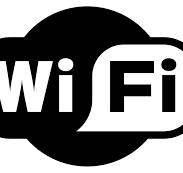
Wi-Fi, the invisible thread that connects us to the world of the Internet, has a fascinating history. From a small idea to a global revolution in the way we communicate, Wi-Fi has become an integral part of our daily lives.
So what is this Wi-Fi?
Wi-Fi is one of the most important technologies in the modern world that allows you to wirelessly connect various devices to the Internet or to each other. This technology uses radio waves to transmit data, providing fast Internet access without the need for network cables. Wi-Fi can operate at different frequencies, typically 2.4 GHz or 5 GHz, each with its own advantages in terms of signal speed and range.
The basis for Wi-Fi is the standards developed by the IEEE 802.11 group, which define how data is transmitted over wireless networks. Over time, these standards have been updated to support faster data rates and better connectivity in different environments. Today, Wi-Fi makes it easy to connect smartphones, computers, tablets, TVs, smart home devices, and more, making our digital lives more convenient and connected.
An important characteristic of Wi-Fi is that this technology allows you to create local area networks (LANs) in your home or office without the need to lay network cables. Wi-Fi also supports data security technologies such as WPA2 (Wi-Fi Protected Access 2), which protects transmitted data from unauthorized access.
Due to its versatility and ease of use, Wi-Fi has become an integral part of our everyday life, allowing us to connect to the Internet quickly and easily in cafes, airports, hotels, public places, as well as at home and at work.
History of the network
The history of the invention of Wi-Fi includes the work of many scientists and engineers, but one of the main figures in its creation is Victoria Wilson, along with her colleague John O’Sullivan from the Australian National Research Agency CSIRO. In the 1990s, they worked on a project looking for ways to use radio waves for wireless data transmission. Their research and development became the basis for the Wi-Fi technology that is used all over the world today.
The main breakthrough related to their work was in the use of a technique known as spread spectrum, which allows data to be transmitted over long distances with high speed and reliability, even in conditions previously considered difficult for radio communications.
Their contributions to the development of wireless networks not only contributed to the creation of Wi-Fi as we know it today, but were also important for the development of other wireless technologies. For their inventions and contributions to science and technology, the CSIRO team has received numerous awards and recognitions.
How does Wi-Fi work?
When you use Wi-Fi, your device actually communicates with a router that is connected to the Internet. The router converts digital data from the Internet into radio waves, which are then received by the device. These radio waves use an electromagnetic field to transmit information, allowing data to travel through the air.
Let’s look at this step by step and in more detail:
- When you connect the device to a Wi-Fi network, it sends a request to connect to the router. If you enter the correct password (in the case of a secure network), the connection is established.
- Once the connection is established, the router starts transmitting data between the Internet and your device using radio waves. These waves are encoded and decoded using special algorithms to convert digital data into a form suitable for transmission through the air and back.
- Most modern Wi-Fi networks operate on two main frequencies: 2.4 GHz and 5 GHz. 2.4 GHz offers longer signal range and better penetration through obstacles, but may be more prone to interference with other devices. 5 GHz offers higher data rates and is less prone to interference, but has a shorter range.
- Wi-Fi networks use various encryption methods, such as WPA2 (Wi-Fi Protected Access 2), to protect transmitted data, which ensures a secure connection between devices and the router.
- The router also acts as a network manager and assigns IP addresses to connecting devices, as well as manages traffic on the network for optimal performance.
Some interesting facts:
- The first Wi-Fi device was not aimed at ordinary users. The early use of Wi-Fi technology was focused on corporate networks and scientific research, not on home use.
- The first Wi-Fi device was based on the IEEE 802.11 standard, which was ratified in 1997. This standard established the basis for wireless communication.
- Early Wi-Fi networks had very limited data transfer speeds – only 2 Mbps, which is much lower than modern standards.
- The first Wi-Fi devices were much larger than modern ones. The routers and adapters were bulky, which limited their portability.
- The cost of early Wi-Fi was high, which in turn made it inaccessible to a wide range of users.
- Initial Wi-Fi devices often had compatibility issues due to the lack of unified standards.
- Security issues were not properly addressed in the first versions of Wi-Fi, and this led to the development of secure protocols such as WEP and later WPA.
- Despite its humble beginnings, Wi-Fi technology has rapidly evolved to offer faster speeds, better coverage, and increased security, making it an integral part of our daily lives.
Over the years, Wi-Fi technology has evolved significantly with higher speeds and better coverage, making it indispensable in home and commercial networks. Thanks to this, we can connect to the Internet almost wherever there is an available Wi-Fi signal. All of this has changed the way we get information, communicate, work, and play, making wireless Internet access universally available and convenient for users around the world.

